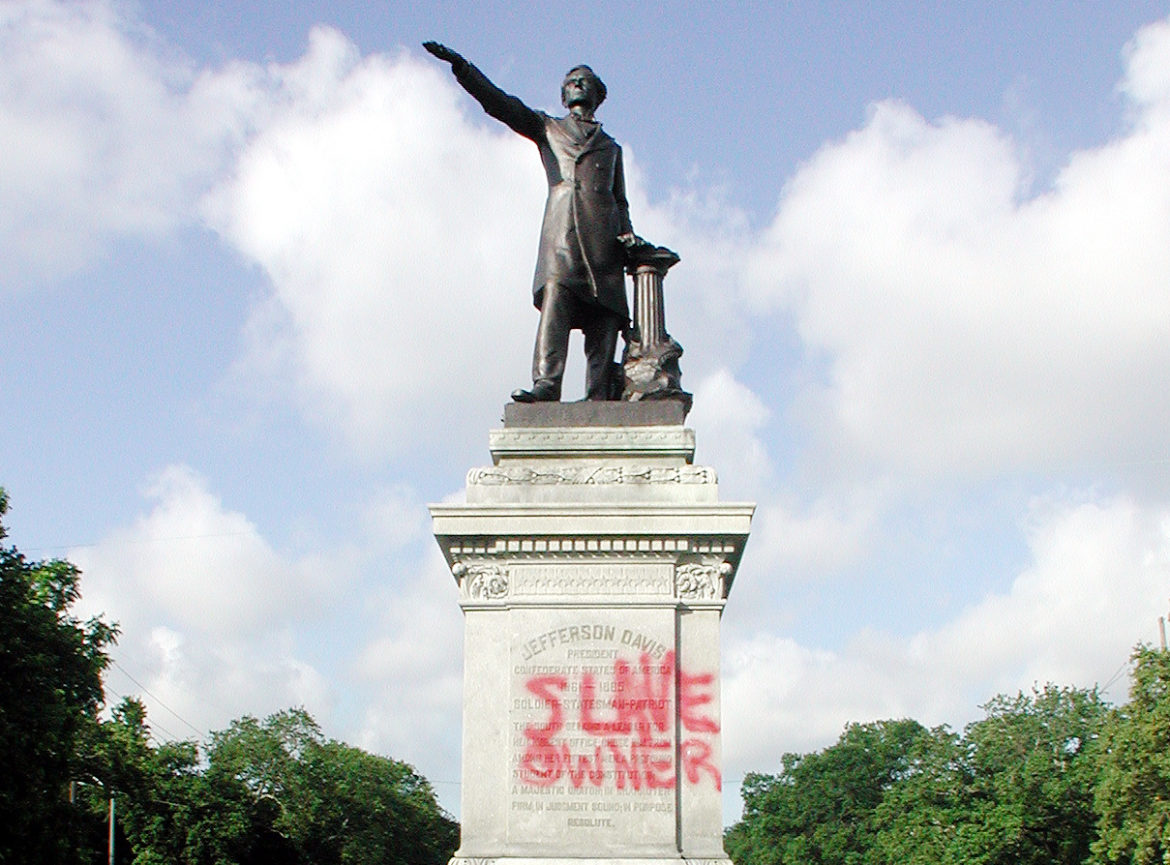Taking down monuments to people who fought to defend slavery should not be controversial at all. Yet in the US today, it is.
Published in the October 2017 issue of the New Internationalist.
It’s time to take down monuments to those who fought in defense of slavery.
This should hardly be controversial, and yet somehow, in the United States today, it is.
The context for this discussion is an incident of shocking racist violence. In August, white supremacists converged in Charlottesville, Virginia for a “Unite the Right” rally. The event featured marchers wearing anti-Semitic insignias, flying the “Black Cross of Southern nationalism,” and chanting Nazi slogans. When anti-racists confronted them, a right-wing participant drove a car into a group of the counter-protesters, killing one and injuring 19 others.
Donald Trump’s response to the tragedy—which was either astonishingly tone deaf or remarkably revealing, depending on how you look at it—provoked condemnation even from his fellow Republicans. Providing a full-throated disavowal of white supremacist groups proved too much for Trump. In the wake of the attack, he instead argued, “I think there is blame on both sides”—that is, both the racists and the people who condemned racism. He indicated that, although there were surely some bad apples in the neo-Nazi crowd, there were also some “very fine people.”
Many cities throughout the Southern United States—including Charlottesville—still have monuments to Confederate heroes of the American Civil War. In the wake of the violence, calls for these statues to come down have intensified.
Webster’s dictionary defines a monument as “a lasting evidence, reminder, or example of someone or something notable or great.” Soft defenders of the Confederate monuments argue that the statues should remain because they depict an important aspect of the U.S. past; to remove them would be to erase history. “Unite the Right” participants, meanwhile, regard the immortalized figures as not merely notable but great, claiming them as emblems of white “heritage” that should be cherished.
The racist defense of the monuments is abhorrent but honest. The more moderate excuses are simply disingenuous.
As historian Eric Foner has noted, when the statue of Saddam Hussein fell in Baghdad, there weren’t a lot of conservatives railing against the toppling as a reckless desecration of historical memory.
Rather than serving to educate the U.S. public, the monuments in question present a contorted vision of the past. Upon seeing one statue of a Confederate soldier in North Carolina in 1931, the great scholar and activist W.E.B. Du Bois remarked with dismay that its plaque read, “Died Fighting for Liberty!”
“Of course, the plain truth of the matter,” Du Bois explained, “would be an inscription something like this: ‘Sacred to the memory of those who fought to Perpetuate Human Slavery.’”
Many of the Confederate statues now standing were not erected until the 1920s, at the height of Jim Crow segregation. Their placement in public spaces served as an unsubtle defense of the American Apartheid then being enacted.
To remove these monuments from places of honor and replace them with statues celebrating slavery’s too-often forgotten victims and adversaries is not to erase history, but to reclaim it.
Opposing protesters, Trump decried “the removal of our beautiful statues and monuments.” And he asked, “where does it stop?” If Confederate leaders might be scrutinized, Trump reasoned, what about other hallowed icons of American nationalism?
He’s not wrong to ask.
Although many citizens would prefer a story of the U.S. past that is sanitized and triumphant, those willing to look at history with clear eyes must acknowledge that the country’s cherished promises of “liberty and justice for all” have never been fully realized, and that the Americans most ardently pursuing these ideals have often been in conflict with those in power—the lawmakers, generals, and industrialists who, up to this point, have been most likely to be cast in bronze.
Recognizing this, we must be willing to question the heroes of the past, and—when necessary—to choose new ones.
An honest reckoning does not end quickly or easily, but justice demands it.
__________
Photo credit: Bart Everson / Wikimedia Commons.
